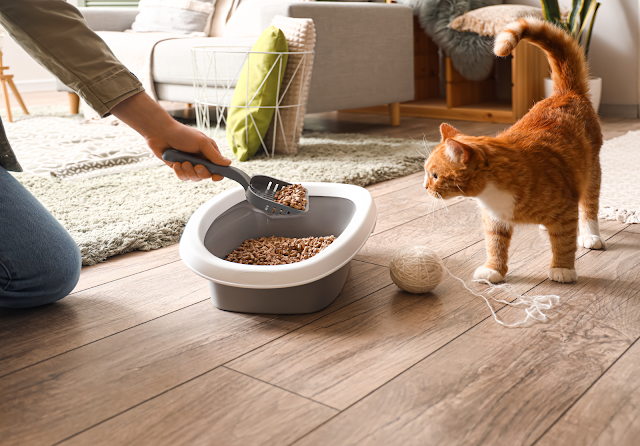No matter how independent your cat is, proper early training helps strengthen the bond of trust between you and your furry friend. With patience and positive reinforcement, cats can easily learn important habits as well as simple cues for fun and games. Here is a complete guide to litter box training, basic commands, and interactive tricks to keep your cat mentally stimulated:
Litter Box Training
Cats naturally use loose materials like soil or sand to cover waste, so a litter box filled with clumping litter satisfies this instinct. To train them:
- Place your kitten in the box after meals, naps, and play to associate it with elimination.
- If an accident occurs, gently pick them up and place them in the box without punishment.
- Scoop daily to remove solids and change litter completely weekly for optimal scent appeal.
- Use multiple boxes - one on each floor is standard - to avoid issues from single locations.
- Declawed cats especially need scratching pads to supplement the lack of scratching outlets.
Stick with the routine and clean spills thoroughly to discourage repeat offenses indoors. Praise Happy hangs in the litter with treats to reinforce positive behavior. Most cats catch on within a few weeks with consistency.
Basic Cues: Sit, Come, Paw
Teach simple commands like “Sit” by luring your cat into a sitting position with a treat, then reward and praise. Repeat regularly to cement the behavior to verbal cues alone.
For “Come,” call your cat in a cheerful tone and reward their approach so they learn coming equals yummy prizes. Build distance gradually.
To cue “Paw,” hold a treat in your hand near their chest and wait for them to lift a paw to bat it. Reward contact with the prize. This teaches to raise a paw politely on command.
Patient repetition is key for cues to stick. End each session on a positive note to keep interactions fun and rewarding rather than frustrating. Your cat will pick up on queues more readily with play rather than scolding.
Interactive Tricks: Jump, Spin, Weave
Add complexity to mental stimulation and bonding opportunities by teaching tricks. For “Jump,” hold a treat over an object and encourage them to leap onto it to receive the reward above.
To cue “Spin,” lure them around in a circle while clicking or praising. Reinforce with food immediately once the complete rotation is earned.
Weaving through your legs is a cute skill. Hold treats to first encourage movement between your standing legs. Reward instances of slinking through until reliably responding to verbal direction.
Keep sessions 5-10 minutes tops to avoid boredom or fatigue. Purchase or DIY challenge toys and interactive puzzles to extend mental workouts. With consistency, praise, and play-for-success motivations, you’ll have a talented friend having fun following your lead.
Ultimately, understand each cat's temperament and potential. Some are happy as lap buddies without complex routines. While training offers great enrichment and useful communication skills, focus foremost on fostering profound mutual love and trust in your relationship. Your cat will shine simply by being their wonderful self!

